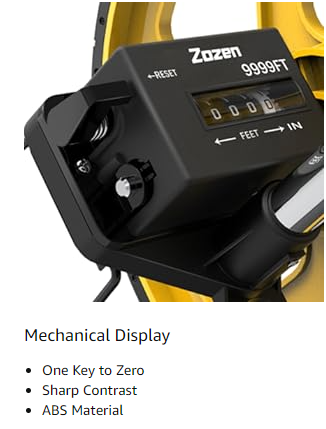
-
 Afrikaans
Afrikaans -
 Albanian
Albanian -
 Amharic
Amharic -
 Arabic
Arabic -
 Armenian
Armenian -
 Azerbaijani
Azerbaijani -
 Basque
Basque -
 Belarusian
Belarusian -
 Bengali
Bengali -
 Bosnian
Bosnian -
 Bulgarian
Bulgarian -
 Catalan
Catalan -
 Cebuano
Cebuano -
 Corsican
Corsican -
 Croatian
Croatian -
 Czech
Czech -
 Danish
Danish -
 Dutch
Dutch -
 English
English -
 Esperanto
Esperanto -
 Estonian
Estonian -
 Finnish
Finnish -
 French
French -
 Frisian
Frisian -
 Galician
Galician -
 Georgian
Georgian -
 German
German -
 Greek
Greek -
 Gujarati
Gujarati -
 Haitian Creole
Haitian Creole -
 hausa
hausa -
 hawaiian
hawaiian -
 Hebrew
Hebrew -
 Hindi
Hindi -
 Miao
Miao -
 Hungarian
Hungarian -
 Icelandic
Icelandic -
 igbo
igbo -
 Indonesian
Indonesian -
 irish
irish -
 Italian
Italian -
 Japanese
Japanese -
 Javanese
Javanese -
 Kannada
Kannada -
 kazakh
kazakh -
 Khmer
Khmer -
 Rwandese
Rwandese -
 Korean
Korean -
 Kurdish
Kurdish -
 Kyrgyz
Kyrgyz -
 Lao
Lao -
 Latin
Latin -
 Latvian
Latvian -
 Lithuanian
Lithuanian -
 Luxembourgish
Luxembourgish -
 Macedonian
Macedonian -
 Malgashi
Malgashi -
 Malay
Malay -
 Malayalam
Malayalam -
 Maltese
Maltese -
 Maori
Maori -
 Marathi
Marathi -
 Mongolian
Mongolian -
 Myanmar
Myanmar -
 Nepali
Nepali -
 Norwegian
Norwegian -
 Norwegian
Norwegian -
 Occitan
Occitan -
 Pashto
Pashto -
 Persian
Persian -
 Polish
Polish -
 Portuguese
Portuguese -
 Punjabi
Punjabi -
 Romanian
Romanian -
 Russian
Russian -
 Samoan
Samoan -
 Scottish Gaelic
Scottish Gaelic -
 Serbian
Serbian -
 Sesotho
Sesotho -
 Shona
Shona -
 Sindhi
Sindhi -
 Sinhala
Sinhala -
 Slovak
Slovak -
 Slovenian
Slovenian -
 Somali
Somali -
 Spanish
Spanish -
 Sundanese
Sundanese -
 Swahili
Swahili -
 Swedish
Swedish -
 Tagalog
Tagalog -
 Tajik
Tajik -
 Tamil
Tamil -
 Tatar
Tatar -
 Telugu
Telugu -
 Thai
Thai -
 Turkish
Turkish -
 Turkmen
Turkmen -
 Ukrainian
Ukrainian -
 Urdu
Urdu -
 Uighur
Uighur -
 Uzbek
Uzbek -
 Vietnamese
Vietnamese -
 Welsh
Welsh -
 Bantu
Bantu -
 Yiddish
Yiddish -
 Yoruba
Yoruba -
 Zulu
Zulu


نومبر . 01, 2024 14:30 Back to list
Effective Ground Rod Installation for Reliable Electrical Systems and Safety
The Importance of 20% Ground Rod in Electrical Systems
In the realm of electrical systems, grounding is a crucial aspect that ensures safety, functionality, and efficiency. One of the fundamental components of grounding systems is the ground rod. Among various types of grounding techniques, a ground rod that complies with the 20% rule plays an essential role in reducing electrical hazards and optimizing performance.
The 20% ground rod refers to a grounding system where a ground rod is driven into the earth and is required to achieve a resistance to ground of not more than 25 ohms. In certain applications and locations, this value may be adjusted to ensure that the electrical system remains safe and effective. However, it is commonly accepted that having a resistance under this threshold significantly enhances the safety of electrical installations.
The Importance of 20% Ground Rod in Electrical Systems
For the proper functionalities of electrical systems, adherence to the 20% rule manifests in several key ways. Firstly, it ensures that grounding connections are robust, minimizing the possibility of voltage spikes that can damage equipment. Industries that heavily rely on electronic devices, such as telecommunications, healthcare, and power generation, benefit significantly from this regulation. A well-grounded system protects these devices, enhancing their longevity and reliability.
20 ground rod

Secondly, the 20% ground rod is essential for personal safety. Grounding not only prevents damage to equipment but also safeguards individuals working with or around electrical systems. Inadequate grounding can lead to dangerous conditions where accidental electrical shocks occur. A compliant ground rod setup mitigates such risks, creating a safer working environment.
Moreover, adherence to local electrical codes and standards often incorporates the 20% ground rod requirement. These regulations are crafted to ensure the highest standards of safety and efficiency. Compliance not only protects the integrity of electrical systems but also helps in preventing legal issues that may arise from safety violations.
However, achieving a 20% ground rod is not always straightforward. It requires proper planning, execution, and regular maintenance. Factors such as the soil type, moisture content, and the physical layout of the grounding system highly influence the efficacy of the ground rod. Therefore, thorough soil testing prior to installation can provide critical information that may dictate the depth and number of ground rods required for optimal performance.
In conclusion, the 20% ground rod requirement is a pivotal element of safe and efficient electrical systems. It not only protects equipment from electrical surges but also ensures the safety of individuals working with electrical installations. By adhering to this guideline, industries can promote the longevity of their equipment and contribute to a safer working environment. Properly implemented grounding solutions, including the 20% ground rod, are indispensable in today's increasingly electrified world.
Latest news
Your Best Choice for Duct Rodder and Fish Tape Wire Puller Tools
NewsAug.13,2025
Unlocking Efficiency and Precision with Premium Cable Tools and Equipment
NewsAug.13,2025
Smart Solutions with Precision: Cable Pulling Tools That Deliver
NewsAug.13,2025
Reliable Protection with Advanced Hot Stick Technology
NewsAug.13,2025
Reliable Cable Installation Tools at Your Fingertips
NewsAug.13,2025
Optimized Cable Laying with Heavy-Duty Solutions for Modern Projects
NewsAug.13,2025











